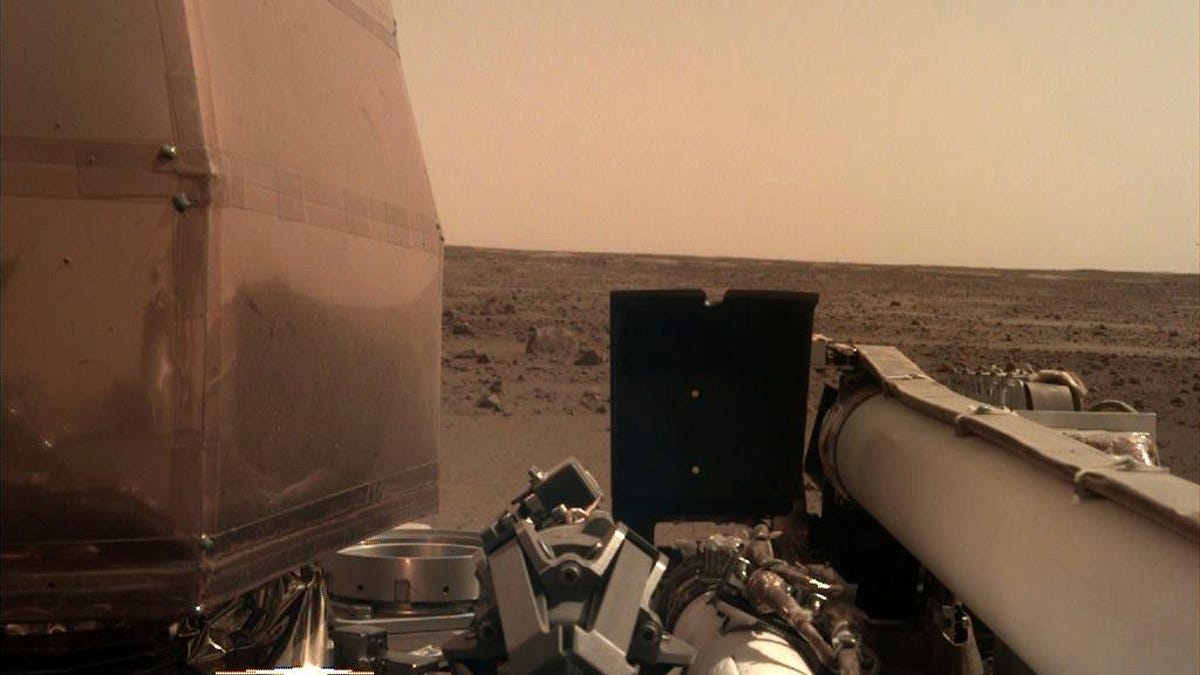NASA InSight lander delivers first clear image of Mars landing site
A quiet, clear horizon beckons in InSight's first dust-free image of its new home.

It's been a big day for NASA and its new Mars lander, InSight , but the robot hasn't clocked off for the day just yet.
After successfully touching down on the Red Planet just before midday PT on Nov. 26, InSight quickly beamed back its first image: a gritty, dust-covered view of the Martian soil. That image, taken by the Instrument Context Camera (ICC), was obstructed by a protective lens cap installed to protect the device during landing.
But InSight has another camera, attached to its robotic arm, that has allowed it to see its landing site for the first time.
The dust-free image was posted by the ever-poetic @NASAInSight Twitter account (which we are choosing to believe is actually run by InSight and not a savvy social media team) late Monday evening, mere hours after InSight had officially touched down. This, ladies and gentleman, boys and girls, is InSight's first clear view of Elysium Planitia, its new home.
There’s a quiet beauty here. Looking forward to exploring my new home. #MarsLanding pic.twitter.com/mfClzsfJJr
— NASAInSight (@NASAInSight) November 27, 2018
Though InSight has been getting all the attention, spare a thought for the two MarCO CubeSats that accompanied the new lander to Mars. MarCO B, nicknamed Wall-E, beamed back its own image of the Red Planet not long after landing -- the first time that a CubeSat has taken a photo in deep space.
If you want to know what's next for InSight as it begins its mission on Mars, head to our explainer.

